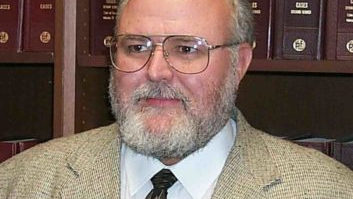
I got a lot of feedback from readers on our previous issue.
First, I want to address comments that our coverage was biased in favor of the proposed HD Radio power increase.
In the Oct. 14 issue of RW Engineering Extra we printed a lengthy article that detailed the possible benefits in digital coverage that could be obtained by increasing digital power beyond the currently authorized 1 percent average power level. This article provided detailed measurements and observations and clearly was supportive of the plan.
I consider the proposal to allow such a large increase in digital power to be the most important technical story of the last couple of years and the culminating technical question about the future of the HD Radio system.
If we go forward along this path, it is clear this will be the final chance for HD Radio to prove itself as a means to transition the radio industry to a digital transmission medium.
To give you the best possible understanding of what this proposal means, we are presenting in this issue a condensed version of the NPR Labs study on the interference effects of a digital power increase.
Their study considered for the first time the effects of digital power increases on mobile receivers. It offers a proposal for a regulatory framework that would allow power increases, but suggests that the potential for interference be evaluated on a case-by-case basis to ensure protection of existing analog FM service.
In printing both the iBiquity and NPR Labs studies, it is my goal to provide a balanced picture of the technical proposal to increase digital power.
One study points out the possible advantages in coverage area from a power increase. The other cautions that there may be a corresponding cost in analog coverage to weigh against the benefits.
Taken together, the two provide a detailed, empirical basis on which to decide whether such a power increase is warranted. I want to make clear that RW Engineering Extra does not endorse either position in this debate or lean toward either in our news coverage; rather we seek to provide fair coverage to both sides of the debate and to others. I urge you to read these studies carefully and understand their ramifications.
Thread That Thang
Regarding Michael LeClair’s column “Who Designed This Thing Anyway?”:
Thread a piece of threaded rod (all-thread) into one bolt hole, long enough to reach through your case. Once it is inserted through the hole, the transformer should stay happily in place while you start the second bolt. It’s then quite easy to remove the threaded rod from the outside and install the second bolt.
Mechanics use this approach in assembling heavy assemblies such as transmission housings on tractors. It’s common enough that most shops have threaded dowel rods in every size ever needed.
A broadcast technician can keep a couple of pieces of threaded rod hiding in a tool box for just such a use.
Guy Berry
Potomac Instruments Inc.
Frederick, Md.
Plate Power
About Michael LeClair’s column:
I’ve gone through this before also and have the permanent solution, if the back mounting wall is thick enough.
At least one phasor manufacturer makes an aluminum mounting plate for these toroids. It has four holes, two for the toroid, with flat-head 1/4-20 short screws, and two more that are in an extended area of the plate. The back panel that I had was about 3/8-inch aluminum, and I just drilled and tapped two new holes, used the old bolts and now the toroid and plate are removable from the front.
Al Hajny, P.E.
Milwaukee In November, NPR and iBiquity together urged the FCC to recommend a compromise that would allow FM stations to increase power by 6 dB and allow even higher power in many circumstances. Many major broadcasters and transmitter makers support the compromise (see Radio World’s Dec. 2 issue). A decision on this proposal is expected from the FCC in the near future.
That Durned ATU
I received just as much mail from readers about my column in that issue, in which I described trying to mount a toroidal current transformer in an antenna tuning unit without the benefit of an extra pair of hands. Taking a cue from the title of the column (“Who Designed This Thing Anyway?”), I got some great ideas on how to rebuild the transformer mount so that it could be done easily from the inside. Another reader suggested an excellent general method for doing the job solo. Please see our letters. I know that you will enjoy reading the creative solutions that our readers offered.
Finally, concerned reader Dave Wig¬field pointed out that I might want to be sure that I did not mislead anyone into working under unsafe conditions while alone at the transmitter site. So a reminder is in order: I never do work like this, alone or even with an assistant, without first making sure that someone at the studio knows where I am and what I am doing. This kind of communication is essential to prevent someone from trying to turn the transmitter on by accident while you have your head and arms inside the ATU where dangerous voltages run on exposed lines. Please take this to heart and don’t forget the importance of keeping yourself safe, even if you are in a hurry to get the job done.
I want to thank everyone who sent in their comments and suggestions on my ATU puzzle. If you have similar stories to share, please drop me a line at [email protected] and we’ll try to print some of your favorite repairs.










